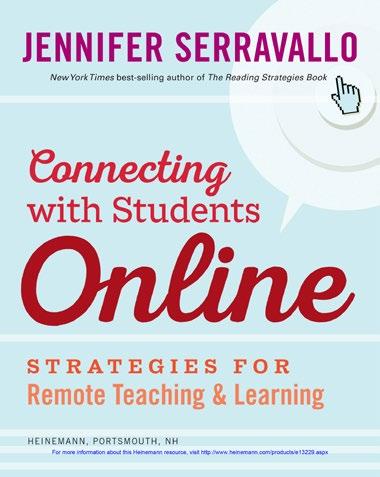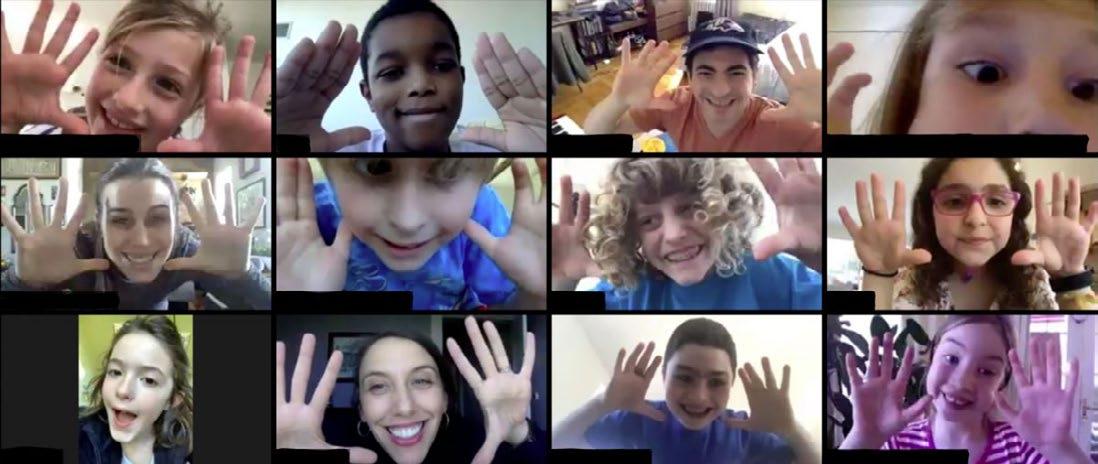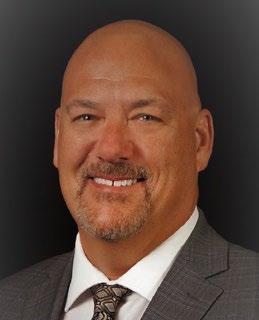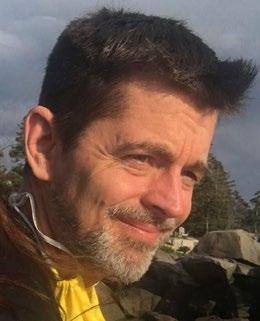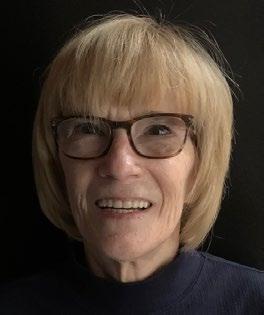
15 minute read
Whole Child
Tara Linney
Celebrating a Newfound Purpose in Education
In 2020, we saw an elevated level of tension affecting many around the world. With all the stress-filled experiences that educators were facing on the daily BEFORE the pandemic, those stressors became amplified once the new limitations went into effect. From this new challenge, I saw an opportunity to create some calm in our overall education space, thus the creation of TL
Specialists, LLC.
The mission of TL Specialists, LLC is as follows:
TL Specialists LLC is an equity-minded education organization established to provide personalized training for schools and districts around the world. In a time where the education system is facing one of its biggest pivots of the era, we are here to deliver personalized educational technology training to your school’s educators with a focus on SEL and equity to help prepare communities for this new shift to a hybrid world.
We, as educators, know that it is hard to learn when we’re feeling anxious. Thus, I saw an opportunity in the field to create stress-free learning environments, wherein grace, patience, and calmness are a part of every training session. By modeling and integrating self-care and SEL practices into training sessions, learners are put at ease, and knowledge is acquired more easily. This is
true regardless of the age of the learner. Thus when administrators, specialists, coaches, and trainers support teachers with an overall sense of calm and grace, the teachers take this experience and transfer that energy to their students.
With everything going on in the world, we know that in order to show up every day for the people in our community, we must make sure that we are okay first. That’s what they teach us when we board planes: always secure your oxygen mask first before helping those around you. The energy that we bring into an environment is something that is transferred to and shared with everyone in that environment. It’s contagious. Thus, by maintaining the calm when the storms surround us, we’re modeling that we can, and will, get through this.
The vast majority of our blog posts focus on ways to make the life of an educator a bit easier.
One of the biggest celebrations that I’ve had in the last year was the moment that TL Specialists LLC became a Google Partner. With our mission centered on a calm, sustainable approach to adult learning, paired with a team of specialists that have diverse backgrounds in the industry of education, we’re providing training, mentoring, and community support resources for schools and districts across the world.
In addition to becoming a Google Partner, TL Specialists LLC also recently became a Recommended Partner for the Google Certified Coach program. This is exciting for a number of different reasons. Having been a coach in schools around the world (France, Singapore, and the U.S.) over the course of the last
See the blog.
eight years, I understand what it takes to be a coach—from the way in which time must be balanced, to the equity piece, to understanding how to differentiate for different educators. It can be a lot and I get it. That’s why I’m looking forward
to both being a mentor and providing mentors to help other coaches in this journey to become a Certified Coach. You see, in today’s world, schools are busy putting out fires. As administrators and coaches work to support teachers and students, their self-care and support can go to the wayside. Although the Certified Coach program has a self-paced news, in their neighborhoods. They have questions about the world around them. The Google Certified Coach program highlights this amazing opportunity to empower teachers to allow their students to wonder, to ask questions, and to investigate solutions to challenges that exist in the world. In addition, the program focuses on coaches providing
course, finding the time, patience, and peace to focus on the curriculum can be challenging. That’s where the support of a mentor comes in. A mentor is someone who provides guidance, motivation, emotional support, and role-modeling. As mentors, we help to alleviate that challenge, while also focusing on the well-being of the coach and the administrators.
What’s great about the Certified Coach curriculum is that it focuses on coaching teachers to adapt their practices to a student-centered learning environment. In this world, our students bring a variety of rich experiences and backgrounds to the classroom. They see things on the 1:1 support for educators in their schools with an emphasis on both relationship building and school goals.
It’s a huge celebration for TL Specialists LLC to be a part of this Google Certified Coach program, because it aligns with both our name and purpose. Within the name “TL Specialists”, both the “T” and the “L” hold many meanings. The “T” stands for timely, technology-embedded, and teaching. The “L” stands for lifelong, learning, and leading. When you combine the two it creates an opportunity to bring teaching and learning together with technology and leading in a timely and lifelong way.
As we embark upon the new year I’m looking forward to opportunities where alignment and purpose intersect. If you’re looking for the same in your community, then contact us at tara@ tlspecialists.com to see how we can best support you.
Tara Linney is an international, awardwinning educator, who has helped several schools nationally and internationally with launching and sustaining effective 1:1 programs over the course of the last decade. In 2016, she received the 21st Century Learning Award for Innovation in Educational Coaching. She holds a B.A. in Mass Communications from the University of South Florida, and an M.S. in the Science of Instruction from Drexel University. She also holds a certification as an Instructional Technology Specialist. Since the start of her career in Education, Tara has played an active role in many professional communities. In 2017, she served as the ISTE Global Collaboration PLN President, where she led an organizational pivot to focus on SDGs in Education. She is currently an active leader of both the ISTE Global Collaboration PLN and the Computer Science PLN. In addition to her work in the PLN teams, Tara is also an ISTE Certified Educator.
Click below to learn more about the Google Certified Coach progam.
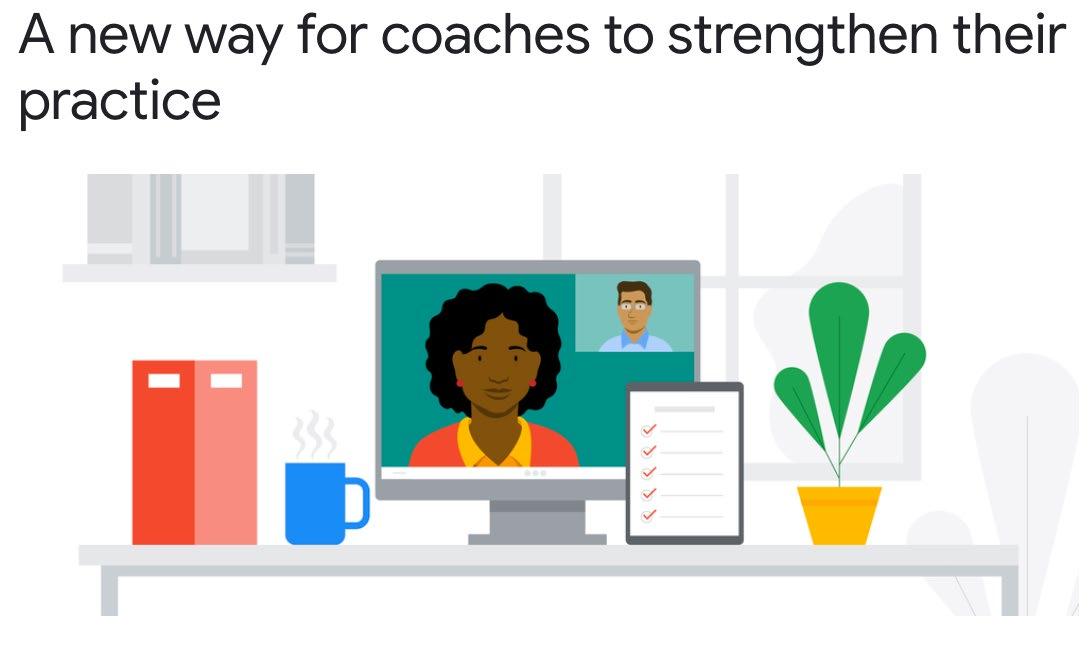
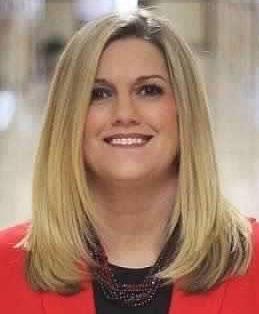
Kirsten Clark
Pandemic Principal(ing)
There’s no denying that the pandemic has completely turned the education world upside down. This is true for everyone with a role in education—students, teachers, parents, bus drivers, cafeteria staff, custodians, administrators. The problem is that unless you’re “in the trenches” in a school setting on a daily basis, you don’t really understand the impact it has had and the toll it is taking. Unfortunately, it also seems as if some don’t want to understand.
The general public needs to know that it is virtually impossible to social distance in a classroom. Keeping students six feet apart from everyone just isn’t realistic. If you stop to think about a class of 25 or more students and spacing the desks six feet apart, that’s an incredibly large space. Classrooms simply are not that big. So, what does that mean? That means when there is a positive, the contact tracing includes seven classes, lunch, bus riders, and any extracurricular activities in which the student may be involved.
In the fall we started school full time in person. There was a period when we had to quarantine over thirty students at a time, and our numbers at one point were well over 100 students out of the building due to being a close contact. Here’s a general idea of what the quarantine process looks like from start to finish for staff.
1. School nurse gets notification of a student positive and notifies administration
2. Administration goes over seating charts to identify those within six feet in every classroom and confirms with teachers
3. Administration identifies close contacts from lunch seating charts
4. Bus drivers are notified and provide close contacts
5. Coaches/sponsors of extracurricular activities are notified and provide close contacts from their activities
6. Students are called out of class and placed in a holding area away from the main student body— they are notified that they are close contacts and need to remain where they are until their parents are notified
7. Parents are called to be informed of their student’s status of a close contact—they either come to pick up their child or give their consent for them to drive home
8. When students are picked up, an administrator escorts them out and provides a detailed letter to parents regarding the quarantine process and the date on which their child may return to school 9. School nurse sends a followup email to parents with the detailed letter
10. School nurse enters all information for close contacts into the State database
11. School secretary collects all quarantine information and compiles it into a spreadsheet that is shared with administration in order to keep track of when students can return—this spreadsheet is updated daily and includes anyone with symptoms, any positive results, and all close contacts
12. Superintendent notifies all parents of the positive via recorded phone message
13. School secretary tracks student attendance with new codes developed by the State in our student management system daily
14. Students on quarantine are now virtual students—teachers must keep their online classes updated and be available for students in their physical classrooms and those at home
Our secondary school switched to a hybrid schedule in November due to the attendance numbers at that time.
Students were divided into two groups based on last name. The administration took into account students who live in the same household but have different last names and made sure they were all in the same group. Group A attends Mondays and Wednesdays. Group B attends Tuesdays and Thursdays. Fridays the powers that be and/or make decisions that I feel are in the best interest of the student body as a whole. We have to try to balance the safety of our students and staff with the academic needs of everyone. It’s not easy. It’s not perfect. It never will be.
are virtual for all students. The hybrid schedule has worked wonders for the attendance rate and close contact numbers. Our last positive resulted in six close contacts—only two being from an actual classroom. There is no denying that for the purpose of keeping students socially distanced, this is the answer. On the flip side, however, is the fact that students are only getting two in person instruction days per week, which obviously is not ideal.
So what is the answer? There isn’t one that will appease everyone. Administrators provide input to the Superintendent and School Board, but ultimately the decision is out of our hands. Being a principal has been described to me by another principal as “middle management.” We get the brunt of the frustrations of everyone. My ultimate goal is to provide proposals to Another issue to consider is staffing. If you don’t have teachers, you can’t have school. We have recently struggled to maintain the staff that we need to keep our doors open. We have a limited pool of substitutes, and when we run out, we have to ask teachers to cover for their colleagues during their preparation time. Again, not ideal, but our options are incredibly limited. We have secretaries and paraprofessionals covering classes at times. I have covered classes as well. This may not seem like a big deal, but teachers need their preparation time to do just that—prepare, grade, have some quiet time, etc.
What educators need from everyone is the courtesy of attempting to understand. Perception is reality, I know. But take a step back and try to have a little empathy for the way in which our
educators and doing everything in their power to ensure that students have what they need. Teachers are present in the classroom, answering emails at all hours, holding Zooms when necessary, driving supplies directly to students’ homes, checking in with students and parents when they have a concern... I could go on and on. We are only human. Stop expecting superhuman efforts and results during a global pandemic. This is our first pandemic. We are learning as we go, and there will be missteps. It doesn’t help anyone when you cuss us, call us out on social media, slander us or our schools. No one is out to get you or your student. We are doing the absolute best we can with what we have. Many have left the profession because this pandemic has taken it out of them. We all love our students, and they are the reason we are here. Give us a break. Please.
That being said, there are most certainly some parents who have been incredibly supportive through this process. Their positive emails and occasional treats for the staff have been godsends. We all know that the positive far outweighs the negative when it comes to parent involvement, but at the same time the negative is much more vocal and therefore seems to be what we hear the most and focus on the most. It’s defeating. But for those who have responded to an email with simple things like, “For the record, I agree with this decision”, you have no idea just how much your words can mean to us in a time like this.
If you have school-aged children, or even if you don’t, make it a point to reach out to teachers and schools to provide positive feedback or words of encouragement. Those small acts of kindness are greatly needed.
Kirsten Clark is a Jr.-Sr. High School Principal who works with approximately 550 students in grades 7-12 and a faculty and staff of 50 in a small, rural school in central Indiana. After spending eleven years teaching in a high school social studies classroom and four years as a high school assistant principal, Kirsten made the transition to principal at her high school alma mater and is now serving in her fourth year.
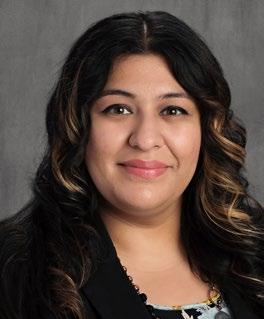
Brenda Mendoza
Celebrating the Whole Child
In 2020, COVID-19 forced educators, parents, and administrators to transform education into remote learning. The pandemic changed the way we learn and exposed our country in many ways; economic inconsistencies, inequitable disparities, and systemic inequalities. However, we also experienced a collective realization; a realignment of our values, a focus on what is truly important, the value of family, the strength of community, and our children’s resilience.
I read a compelling article about the children of the pandemic by Teresa Thayer-Snyder, Superintendent of Voorheesville district in New York. She talked about
the concern of student deficits. This resonated with me because, as ELL teachers, our students are perceived to have many deficits. We acknowledge that it takes years to master a new language, so we only focus on their potential. We advocate the importance of meeting students where they are. I want to join Thayer-Snyder in celebrating the children of this pandemic. Our children were faced with a multitude of challenges, and they found ways to persevere.
Emmy Werner is a developmental psychologist who worked with childhood trauma. She was a trauma
survivor who grew up during World War II. Dr. Divecha, a psychologist and professor at Yale Center for Emotional Intelligence, has been using Werner’s work to help understand how trauma can impact children during a pandemic. She has been collecting research on how this pandemic will affect our children. Through Werner’s studies of war survivors, Divecha has learned that children who have survived war times have an extraordinary affirmation of life. In other words, children that have lived through struggle have considerable regard for life. During this pandemic, our children have developed a similar appreciation. When we ultimately overcome this pandemic our children will be better for it.
We can also thank educators for helping children develop this new resilience. Through her research, she explains that having one caring adult influenced children and encouraged their strength. Children were taught self-awareness, mindfulness, and how to build positive relationships through remote learning. Even if our students faced difficulties at home, having had that caring adult through remote learning made a significant impact. During this pandemic, teachers were at times the only caring individuals available to provide support for students. Many parents were essential to our economy and had to continue to work. According to Divecha’s research, a supportive adult does not need to be a parent. Resilient children can find those supportive relationships with their teachers through remote learning. Children build resilience when they have social support. Children connecting with their teachers via remote learning has provided that collective support. This support has assisted children in developing strength and perseverance.
We have experienced a combined awareness that has transformed our attitudes. It has refocused us on the importance of community and the strength of making connections. In the middle of a pandemic, don’t forget to celebrate our children. Our children faced a multitude of challenges and are still preserving. Our children have not been left behind, if anything, they’ve helped us push forward.
Brenda Mendoza of Chicago is a K-12 ELL specialist in West Aurora School District 129. Her first Master’s was in Curriculum and Instruction, with an emphasis in English Language and Bilingual Education. Her second Master’s was in educational leadership. Brenda has been teaching for twelve years as an ELL and Bilingual educator in grades K-6. She currently teaches fourth grade bilingual, coordinates family literacy workshops, is an instructional coach for Challenging Learning, and is Illinois ASCD’s Whole Child Leader.


